

| A village as the national capital | |
Catemaco (Mexico) to Coban (Guatemala), May 2017
|
|
|
|
|
Our visit to Mexico is almost over. For five months we travelled through this beautiful country, and we could easily stay for a few months more. But on the other hand, sometimes you just have to move on. The country has surprised us in all respects, and we can say that we find Mexico one of the nicest travel destinations we have visited so far. This brings the country to the top regions of our illustrious list of favourite travel destinations, joining countries such as Iran, the Philippines, Nepal and Indonesia. Mexico does not have a very positive image and we really do not know why. Of course, the country has many problems, and there is a lot of violence, but you do not really see/feel this as a traveller. There are some areas in the country that you can better avoid because of the activities of the drug cartels, but if you pick the destinations carefully and use common sense, Mexico is a great destination. The country is safe, colourful, amazingly beautiful, and the people are extremely hospitable and friendly. Only once during our five-month stay, we felt like someone was trying to cheat us. So, if Trump says Mexico is the land of the thieves and rapists, he either doesn’t know what he is talking about, or his country draws only the wrong Mexicans. So we look back on our visit to the Tequila country with a very good feeling as we cross the border from Mexico to Guatemala on a small boat (see also the article: Via the human trafficking route to Guatemala). Well, Guatemala! What can we expect? That country’s image isn’t that good either. The crime rates are indeed shocking, and if you have to believe the travel advice of the various Western countries, you are constantly at risk. For example, the Dutch Ministry of Foreign Affairs writes in their travel advice: "In Guatemala, murder, rape and armed robbery are a major problem. This has to do with the high levels of violence and crime by organized crime organisations and rival youth gangs. This occurs throughout the country. Be aware of the risks in Guatemala”. End of the quote. Of course, we take these opinions very seriously. On the other hand, we have learned that you should not let yourself go crazy. Still, in countries such as Guatemala, more than 99% of travellers experience no problems at all, and have a great time. But that does not mean that you don’t have to take care of yourself. And that something can happen, even if you are careful, is what Edwin knows from his own experience. It was here in Guatemala, exactly 20 years ago, that he had one of his most bizarre travel experiences so far, when he was robbed in Panajachel with a gun pointed at his head (see also the article: Dinner at gun point). |
|
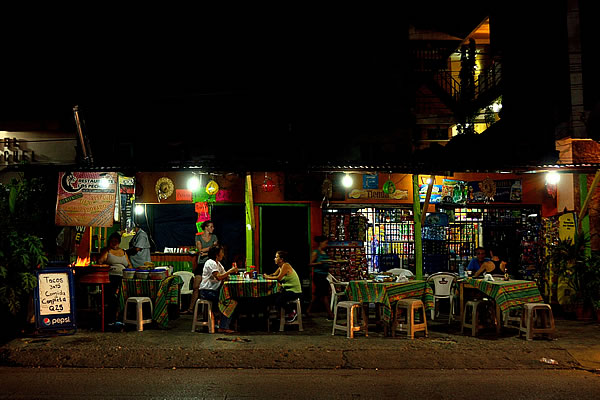 |
|
A small and atmospheric restaurant in Flores (Guatemala) |
|
Our first destination in Guatemala are the Mayan ruins of Tikal. Even though we have visited quite a few archaeological destinations in Mexico, we did not want to miss this one. Due to its remote location in the jungle, and the fact that many buildings remained amazingly well preserved, Tikal is considered to be the "mother" of archaeological excavations in Central America. And we can indeed confirm that Tikal is a great experience. We were lucky to be there in the low season, so there were not many visitors. But even if it's busy, Tikal is big enough to have parts of the park for yourself. After Tikal we crossed the border to Belize for 10 days. Belize was not high on our wish list, but because we were in the area, we decided to go and get an impression of this small country. And that was definitely worth it. Belize is by no means comparable to the other countries of Central America. Belize is much more Caribbean than the rest of Central America and can be compared much more with destinations like Jamaica, Trinidad & Tobago, or one of the smaller Caribbean islands. Since Belize is relatively expensive, we thought carefully about what we wanted to see in Belize. We have deliberately avoided the popular beach destinations. These are especially popular among richer American tourists. As a result, prices are inflated and there isn’t much left of the real Belize. In addition, we do not really like sand between our toes and a beach is only interesting for us if there are birds or if there is a terrace where they serve cold beer, and where there is a view on the beach without actually having to enter the beach. Belize also has some beautiful bird destinations, but they are not really accessible to individual travellers who do not want to spend a fortune on expensive jungle resort rooms and tours. These expensive jungle resorts focus on American birdwatchers who want to be taken care of and like to expand their ‘bird life list’ in a luxurious and easy way. So, not our way. And since the birds that you can see in Belize, can often also be seen in Guatemala and Mexico, we'll take it easy with birding in Belize. So, we focussed our attention on the towns and one only major city. |
|
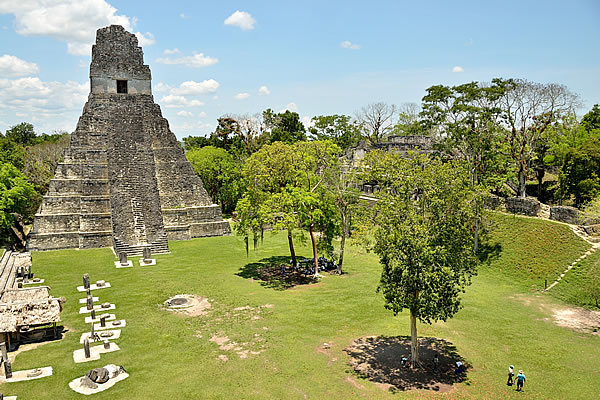 |
|
One of the Maya temples in Tikal |
|
|
Especially the capital of Belize, Belmopan, was bizarre. Belize City was once the capital, but because the city has often suffered from natural disaster, the government decided in the 1970s to build a new capital away from the coast. And the result: Belize has a village as its national capital! The number of inhabitants is less than 20,000 and you actually have the feeling of being in a village. The buildings of the different ministries are small, grey and rundown. It's a kind of a midget version of an ugly Soviet provincial town. It's almost laughable. We eventually found Belize City the highlight of our visit to Belize. There are few tourists here, because this city also has a bad reputation. But still, Belize City is the only real city in the country, and this is the place where it all happens, so we wanted to see it. And if you use a little bit of common sense, Belize City can be visited in a responsible way. But again, there is still a small risk. Eventually, we left Belize from Punta Gorda, a small town in the far south of the country, and crossed to Livingston in Guatemala. Livingston is located on the small stretch of Caribbean coast that Guatemala has. It does not look like the rest of Guatemala. Due to its remote location, the town has a very own atmosphere. Many residents are descendants of African slaves and speak English (Garifuna population). These dark Guatemalans live a Caribbean lifestyle. Livingston is not accessible by road, so we had to take a boat to Rio Dulce, from where we travelled by bus to Lanquin. We took another (longer) route because the bus of the previous day came under attack in a village along the way, where villagers threw rocks to the bus as result of a water dispute with the government. The Guatemalans in many remote parts of the country (often inhabited by the Mayan descendants), feel treated bad by the government, and that regularly results in violence. From Lanquin we visited the Semuc Champey National Park, mentioned by many Guatemalans as the most beautiful place of their country. Indeed beautiful, but the little park is literally overrun by thousands of local people and backpackers, who are attracted to the emerald green lakes as a fly on syrup. Via Coban we travelled to a special area (for us) in Guatemala, the Biotope del Quetzal. This is a nature reserve, where you have a great chance to see the beautiful national bird of the country: the Resplendent Quetzal. This bird of paradise-like feathered friend does not show itself very easy, but with a little stamina and time, it is quite possible to see it. And we saw them! One of the absolute highlights of our visit to Guatemala so far (see also the article: In search of the Quetzal). |
|
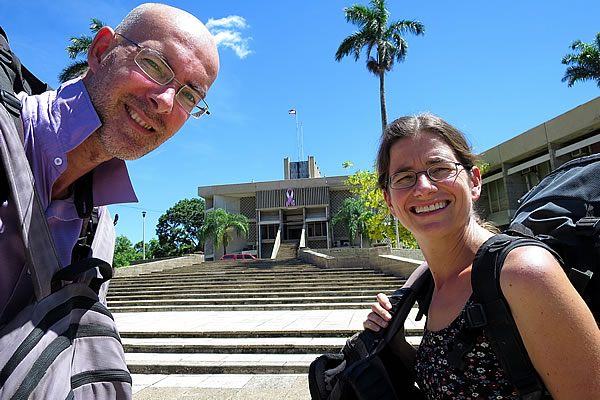 |
|
Us in front of the 'brutalist' parliament building in Belmopan (Belize) |
|
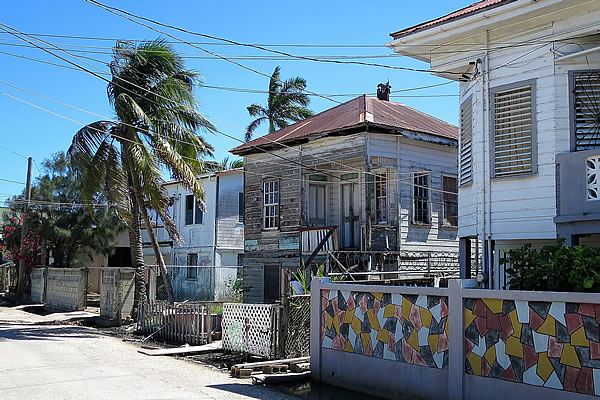 |
|
Caribbean architecture in Belize City |
|
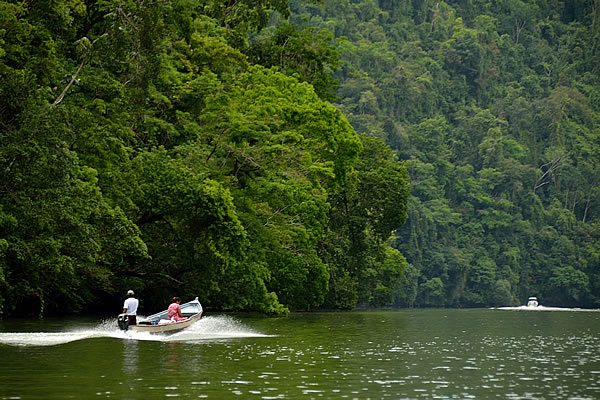 |
|
By boat from Livingston to Rio Dulce (Guatemala) |
|
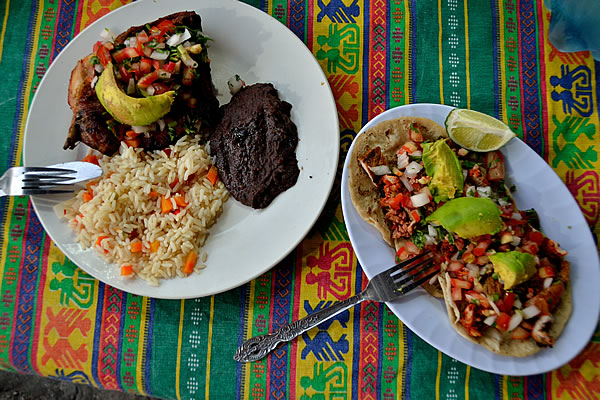 |
|
A 5 Euro meal in Guatemala
| |
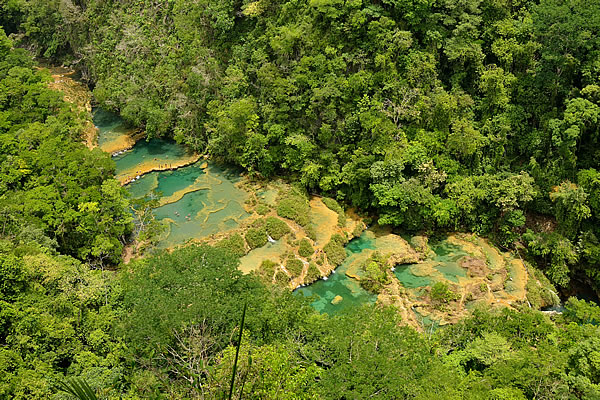 |
|
The emerald green lakes of Semuc Champey © copyright - Babakoto.eu / 2017 |
|